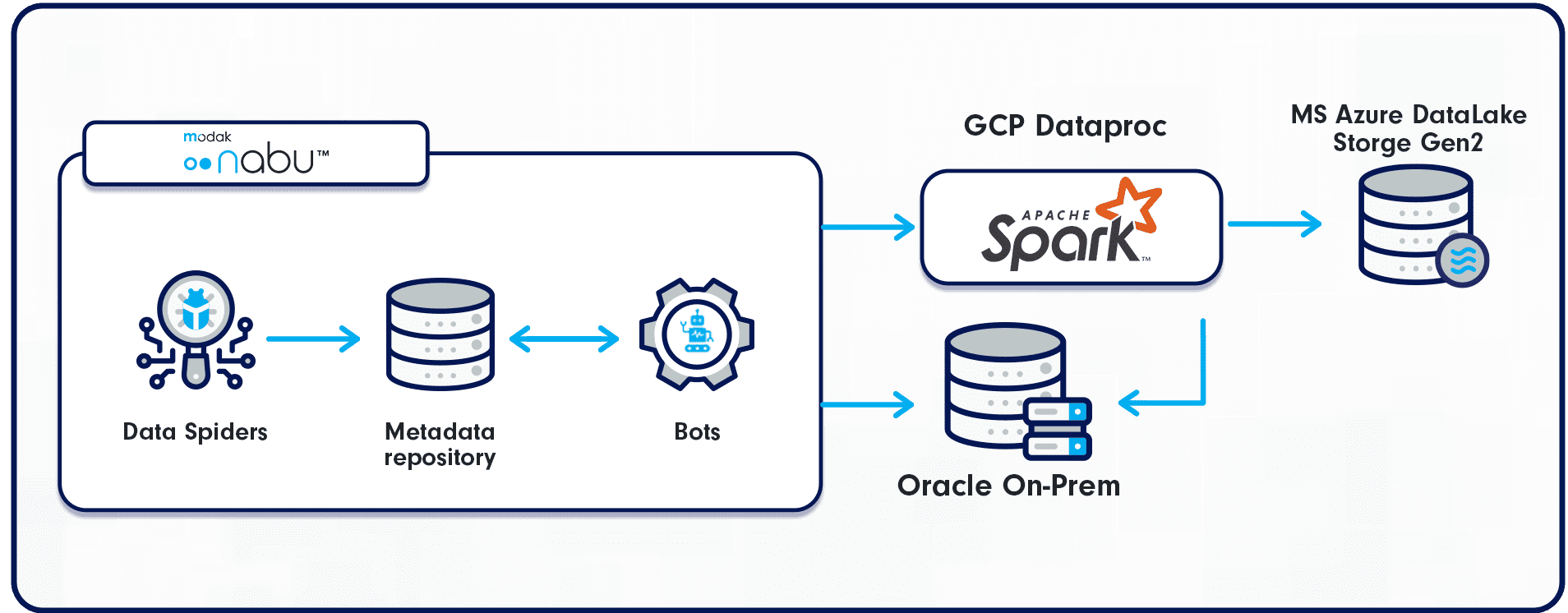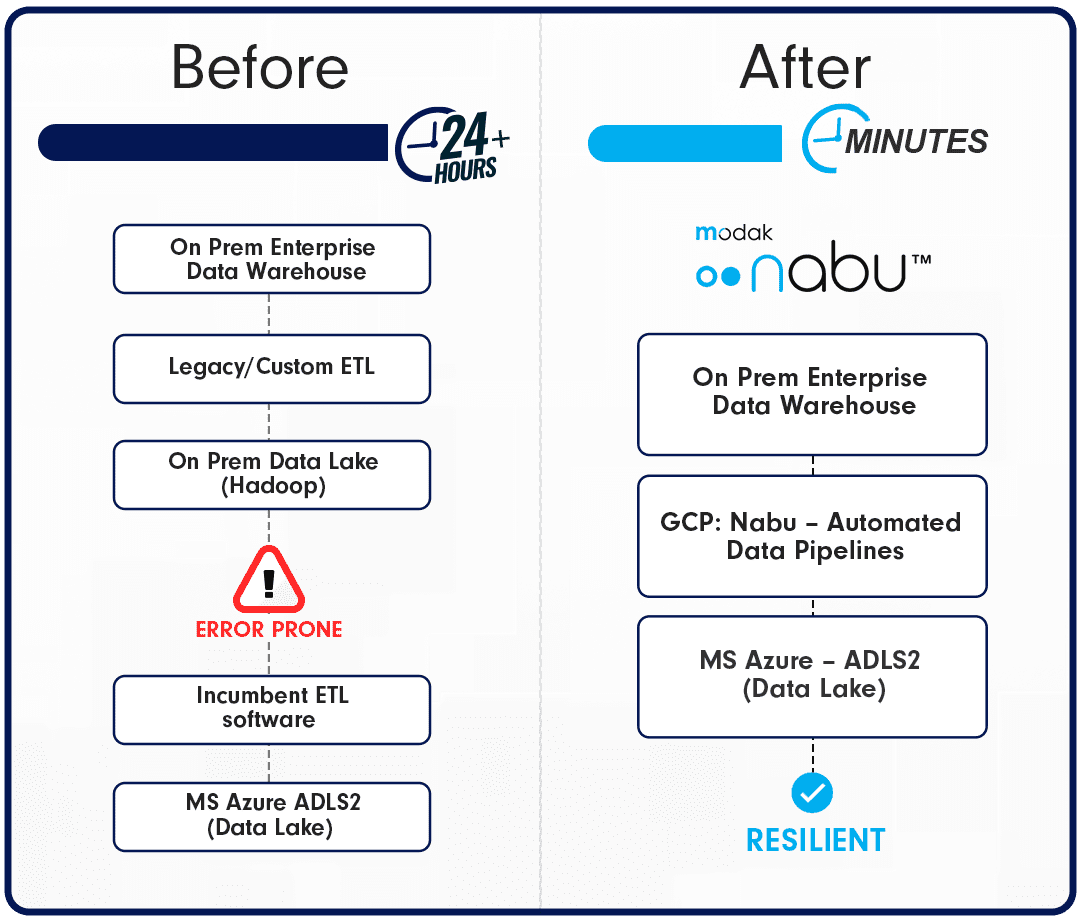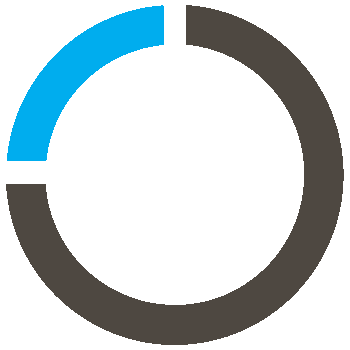
Rajesh Vassey
Technical Program Manager, Modak
Healthcare insurance companies depend on capturing data of their members, data such as healthcare plans, medical data from healthcare providers, review, approval of medicines, and managing Medicare plans for millions of Americans. The volume and variety of data are huge, and ensuring member data is captured, stored, and processed for analytical purposes to support that the right care, at the best possible cost and quality, is delivered in the right place is core to their business model.
A Top 5 Healthcare Insurance company provides medical and specialty insurance products that allow members to access healthcare services through a network of care providers such as physicians, hospitals, and other healthcare providers. As such, data interoperability is at the core of interacting and delivering services to their members.
A Top 5 Healthcare Insurance company provides medical and specialty insurance products that allow members to access healthcare services through a network of care providers such as physicians, hospitals, and other healthcare providers. As such, data interoperability is at the core of interacting and delivering services to their members.
The critical data assets, often referred to as the ‘crown jewels’ for healthcare insurance companies are members and claims data. Historically, the Healthcare insurance company had built on-prem data lakes populated by transactional systems and external data providers to provide a single repository for analytical consumption. The software tools and data storage infrastructure were assembled on legacy ETL tools, and custom programs and hosted on Hadoop. Over time the complexity, lack of scalability, and investment required to maintain and support such an on-prem infrastructure became inflexible and cost-prohibitive. The challenge was to consider the options of how to modernize the software tools and migrate to the cloud and thereby move away from the current processes and dependency on Hadoop.
The data volumes and business integrity checks are significant, with approximately 10+ billion records to be migrated, legacy tools taking over 25 hours to process, and frequently failing and requiring a dedicated team of contractors to manage and support.
The data volumes and business integrity checks are significant, with approximately 10+ billion records to be migrated, legacy tools taking over 25 hours to process, and frequently failing and requiring a dedicated team of contractors to manage and support.

After evaluating incumbents, third-party software, and cloud provider tools the team selected Modak Nabu™, an integrated data engineering platform that accelerates the ingestion, profiling, and migration of data to any cloud provider. The Modak Nabu™ software provides data spiders to crawl, index, and profile large data sets, and automates the creation of data pipelines and Smart BOTs to orchestrate the data movement workflows from the on-prem enterprise source systems to the MS Azure Cloud ADLS2 platform.

Due to the clients’ Cloud 3.0 multi-cloud strategy, and leveraging existing investment, Google’s DataProc Engine (Spark) was used as the compute processing engine to enable the migration and provide resiliency and performance.

Modak Nabu™
Modak Nabu™ enables enterprises to automate data ingestion, curation, and consumption processes at a petabyte-scale. Modak Nabu™ empowers tomorrow's smart enterprises to create repeatable and scalable business data domain products that improve the efficiency and effectiveness of business users, data scientists, and BI analysts in finding the appropriate data, at the right time, and in the right context.
Author:

Rajesh Vassey
Technical Program Manager, Modak

